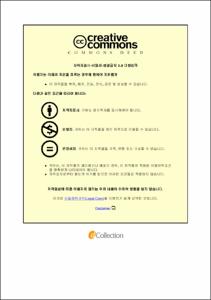Effects of Flow force on the Characteristics of Electrohydraulic Servovalves
- Abstract
- In this study, the effects of flow force on the characteristics of electrohydraulic servovalve with two stage construction are investigated. Servovalves are critical components of the hydraulic servos and their correct operation is mandatory to ensure the proper functioning of the controlled servo system. In order to optimize the design, monitoring the condition, analyze the characteristics and improve the servovalve performance, a precision model of electrohydraulic servovalve is highly needed.
In chapter 2, basic equations for linear and nonlinear simulation model are explained. Three basic equations in the servovalves are torque balance equation in the flapper, continuity equation in the chamber of servovalve and force balance equation in the spool. Based on this equations Simulink models for linear, nonlinear and investigating each term in flow force are built.
In chapter 3, measurement instruments of the flow force in the spool are designed and manufactured. Then the flow force value was measured and compared to the simulation data. Through the comparison data, the value of flow force coefficient is .
The measurement procedures which are used in the servovalve properties measurement are explained briefly in this chapter. The average values of are 465.57 N/m, 8.6 Nm/ rad and 7.9 Nm/ rad, respectively. The value of is estimated through simulation to setting the value of flow rate 63 lpm.
In chapter 4, simulation of the valve’s characteristics in steady and unsteady state, flow force analysis (each terms’ contribution to the total flow force) and the effects of flow force in the servovalve was done. In steady and unsteady state, linear and nonlinear model shows the good agreement with the experimental data from the catalog, Moog G761.
In the flow force analysis, the steady state flow force constitutes an overwhelming portion against the unsteady state flow force in usual servovalves.
In steady state characteristics, the flow force improves linearity and hysteresis in a great deal. In unsteady state characteristics, the flow force induces a fast response. However, this phenomenon is followed by increasing the current input and the small flow rate. The increasing current proved that the amount of the current variation due to the flow force is said to be an endurable level.
- Issued Date
- 2016
- Awarded Date
- 2016. 2
- Type
- Dissertation
- Publisher
- Pukyong National University, Mechanical Design Engineering Department
- Affiliation
- Pukyong National University
- Department
- 대학원 기계설계공학과
- Advisor
- Ill-Yeong Lee
- Table Of Contents
- Contents i
Abstract iv
List of Figures vi
List of Tables viii
Chapter 1 Introduction 1
1.1 Background and purpose of the study 1
1.2 Thesis outline 2
Chapter 2 Mathematical model of the servovalve 5
2.1 Introduction 5
2.2 Basic equations on the servovalve 5
[1] Torque balance equation in the flapper 5
[2] Continuity equation in the chambers of servovalve 8
[3] Force balance equation in the spool 9
[4] Flow equation in the servovalve 10
2.3 Linearization of the servovalve model 10
2.4 Simulation programs for the servovalve model 11
[1] Nonlinear model 11
[2] Linearized model 16
[3] Model for flow force computation 19
2.5 Parameters for simulation 21
2.6 Conclusion of this chapter 22
Chapter 3 Measurement of physical values of the servovalve 23
3.1 Introduction 23
3.2 Measurement of flow force in the spool 23
[1] Experimental instruments and experimental process 23
[2] Experimental results 26
3.3 Measurement of basic physical constant in the servovalve 27
[1] Basic constant in the servovalve 27
[2] Measuring instruments and measuring process 27
[3] Measured results 32
3.4 Conclusion of this chapter 36
Chapter 4 Simulation results 37
4.1 Introduction 37
4.2 The valve’s characteristics in steady and unsteady state 37
[1] Steady state 37
[2] Unsteady state 38
4.3 Flow force analysis (each terms’ contribution to the total flow force) 41
4.4 Effects of the flow force 42
[1] Steady state 42
[2] Unsteady state 46
4.5 Conclusion of this chapter 48
Chapter 5 Conclusions 50
References 52
Publications 55
Appendix 56
A.1 Combining the continuity equations 56
A.2 Linearization of continuity equation 63
A.3 Measuring parameters of the servovalve 69
A.3.1 Measuring process 69
A.3.2 Measured the results 77
- Degree
- Master
- Files in This Item:
-
-
Download
 Effects of Flow force on the Characteristics of Electrohydraulic Servovalves.pdf
기타 데이터 / 2.5 MB / Adobe PDF
Effects of Flow force on the Characteristics of Electrohydraulic Servovalves.pdf
기타 데이터 / 2.5 MB / Adobe PDF
-
Items in Repository are protected by copyright, with all rights reserved, unless otherwise indicated.